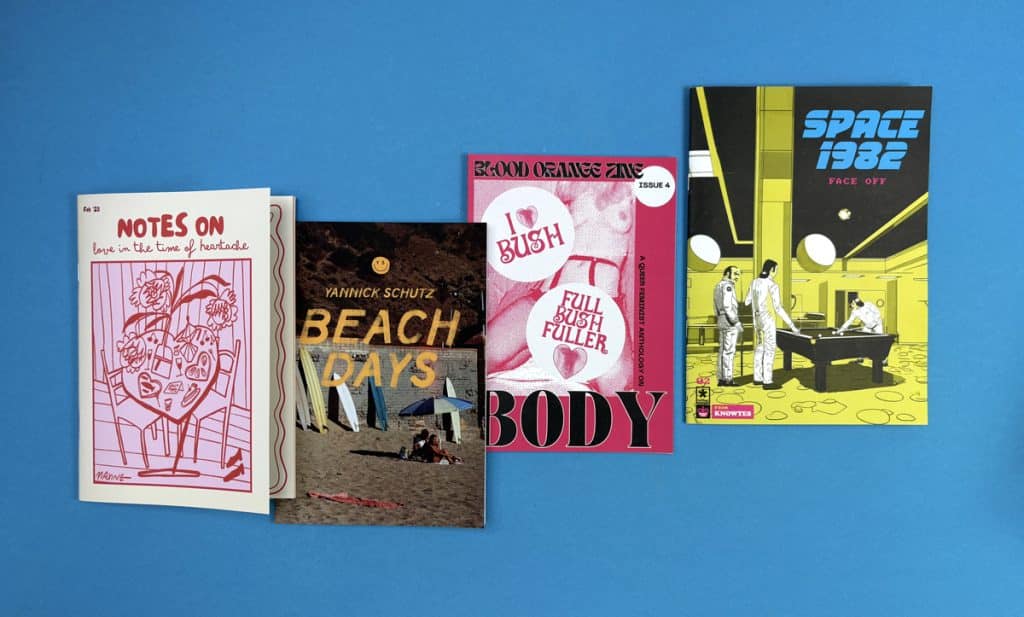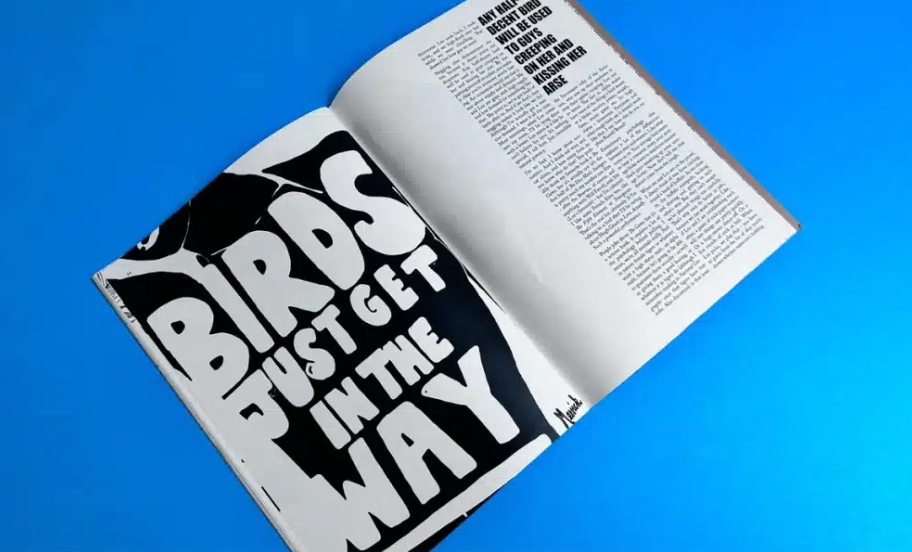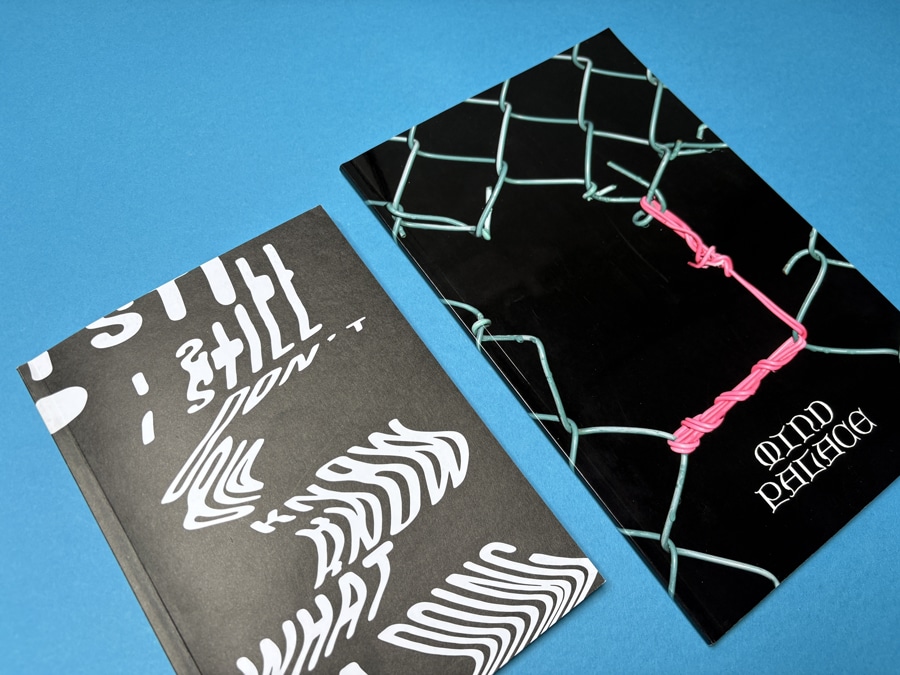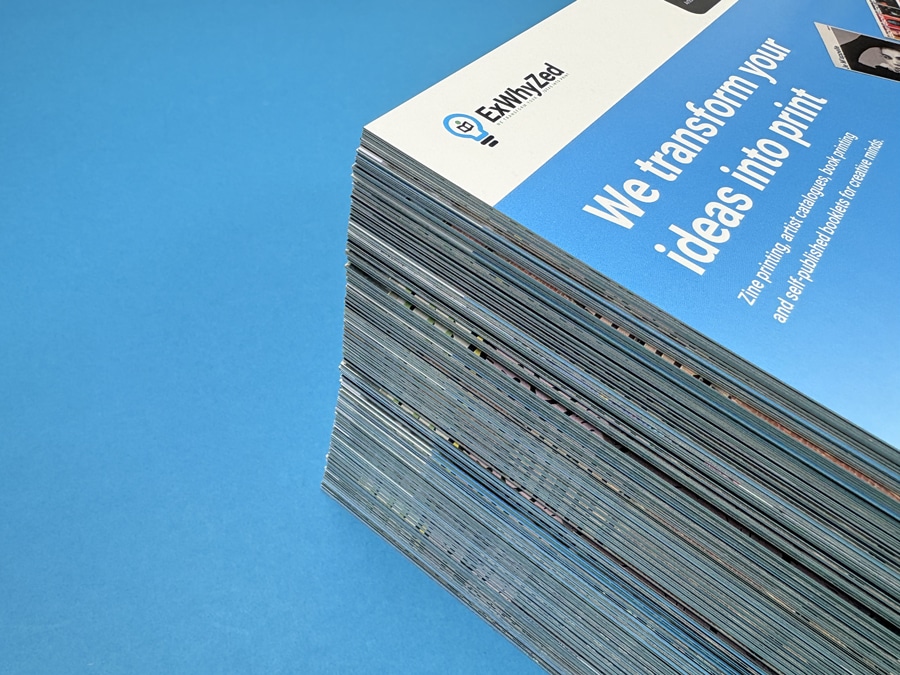What is a Zine? Exploring the World of DIY Publications


In an age dominated by digital content, there's something truly special about holding a physical object in your hands that’s been crafted by someone who poured their passion and creativity into it.
Zines, short for “magazines” or “fanzines,” have been a powerful medium for self-expression, especially for those who want to create something personal, unique, and outside the mainstream.
But what is a zine in art? How are they made? And what makes them so appealing in today’s digital world? Let’s dive into the world of zines and discover how they’ve influenced art, culture, and the way we share ideas.
What is a Zine?

A zine (short for “magazine” or “fanzine”) is a self-published, small-circulation booklet that allows creators to express themselves in ways that mainstream media often doesn’t. Zines are handmade, low-budget publications that serve as an outlet for creative, personal, or political content. They are often crafted with a DIY (do-it-yourself) ethos and are usually distributed in limited quantities.
What sets a zine apart from a typical magazine is its personal touch and independence. A zine can cover a wide range of topics, from music and art to social commentary and personal experiences, often reflecting niche interests or unique perspectives. The creator controls everything—from content creation to the printing process—making the zine an authentic, unfiltered reflection of their ideas.

What Are the Common Characteristics of Zines?
Before we explore the history and the process behind creating a zine, let’s first understand what makes a zine, well, a zine. Here’s a quick rundown of some common characteristics:
- DIY (Do It Yourself) Approach: Zines are typically homemade or produced with minimal resources. This could mean photocopying, hand-binding, or using simple tools like scissors, glue, and paper.
- Small Circulation: Unlike magazines that are mass-produced and distributed to large audiences, zines usually have a limited run, often anywhere from a handful to a few hundred copies.
- Niche Content: Zines can cover a wide range of topics, including personal stories, political commentary, social issues, subcultures, music, and art. The key is that they’re deeply personal and unique.
- Low-Cost Production: Most zines are affordable to produce, with creators often utilizing basic materials such as paper, photocopiers, and inexpensive binding techniques. This makes zines an accessible medium for anyone who wants to create something.
- Non-commercial: Zines aren’t designed to make a profit—they exist to share ideas, celebrate subcultures, and express individuality. They’re a form of independent, anti-commercial art that thrives on creativity and authenticity. If you're ready to turn your vision into print, Ex Why Zed’s zine printing service makes it easy to produce high-quality zines while staying true to your DIY roots.
The History of Zines: From Fanzines to DIY Revolution
Zines have a rich and rebellious history, born out of the need for alternative voices that weren’t being heard in mainstream media. The history of zines dates back to the early 20th century, but they truly took off in the 1930s and 1940s.
The Early Days of Zines
The first zines were born from the science fiction fan communities. In the 1930s, fans of science fiction literature began creating fanzines to share stories, opinions, and news about their favorite books, authors, and conventions. These early zines were informal and photocopied, distributed through fan networks.
The Punk Movement: Zines as Political Statements
Zines gained further prominence during the 1970s and 1980s, largely thanks to the punk movement. Punk rockers used zines to spread their rebellious ideas, critiques of mainstream culture, and to document the underground music scene. Punk zines often featured artwork, political statements, band interviews, and personal reflections. This period helped establish the zine as a vehicle for self-expression and social commentary, setting the foundation for the DIY culture that zines represent today.
The Digital Age and the Revival of Zines
In the 1990s and early 2000s, zines experienced a shift due to the rise of the internet. Many creators began to move their work online, but zines still held a unique charm in the digital age. The tactile, handmade nature of zines offered something personal and distinct compared to the sterile nature of online content. Today, the zine culture is still alive, with annual zine festivals, online communities, and social media platforms that continue to support and promote zine creators.
What Does a Zine Look Like? The Aesthetics of DIY Publications
Zines don’t follow any set aesthetic or format, but there are common elements you’ll find in most. What does a zine look like? The beauty of a zine lies in its diversity and creativity. Zines can be:
- Hand-drawn or Collaged: Many zine creators use hand-drawn illustrations or cut-out images from magazines to create a unique, artistic layout.
- Photocopied and Bound Simply: Zines are often photocopied for mass distribution. Pages may be stapled, perfect bound with string, or simply folded in half.
- Small and Portable: Zines often come in a compact, portable size, ranging from small, pocket-sized booklets to larger, more elaborate creations.
- Personal: Most zines contain highly personal content, whether it’s personal narratives, artwork, or political commentary.
What makes zines stand out is their raw, unpolished feel—this is a part of the appeal. Unlike professionally printed magazines, zines look handmade. The imperfections in design add to their charm, giving each one its own character and vibe.

How are Zines Made: From Paper to Print?
So, how are zines made? It all starts with an idea and a DIY approach to production. Here’s a breakdown of the basic steps to make your own zine:
1. Choose a Concept or Theme
Start by picking a theme you're passionate about—zines are deeply personal, so there's no limit. Whether it’s political commentary, music reviews, photography, personal reflections, or experimental art, choose a concept that excites you and gives your zine a clear identity.
2. Design the Layout
Once your theme is locked in, sketch out your layout. You can go completely DIY with paper and pen, or use tools like Adobe InDesign, Canva, or even a basic word processor. Think visually—mix in drawings, photos, textured backgrounds, and bold fonts that complement your content and give your zine character.
3. Print Your Zine
When you're happy with the design, it’s time to print. Traditional zines often use black-and-white photocopies for a raw, underground feel, but colour printing can give it extra pop if your budget allows. For cost-effective quality, look into printing services like Ex Why Zed—they offer a range of paper types to suit your creative vision without breaking the bank.
4. Bind Your Zine
Next comes binding. You can staple along the spine (saddle-stitch), fold and staple by hand, or opt for perfect binding if your zine has more pages and you want a professional look. Ex Why Zed provides several binding options to match your format and aesthetic, helping you create something that feels as good as it looks.
5. Distribute Your Zine
Now share it with the world. Zines thrive in communities—bring copies to local zine fairs, swap by mail, sell them in indie bookstores, or showcase your work on platforms like Instagram and Etsy. Social media is a powerful way to connect with fellow creators and grow your audience organically.
Need an estimate for your project? Request a tailored quote now.
How to make a Paper Zine? A Step-by-Step Guide
Now that you have an idea of how zines are made, how do you create your own? Here’s a more detailed step-by-step guide to making your very first zine.
Step 1: Plan Your Zine
Start with a clear theme or concept—it gives your zine direction and makes content planning easier. Jot down what you want to include: stories, artwork, photos, quotes, or anything else that fits your idea.
Step 2: Gather Your Materials
Collect your tools—paper, pens, glue, markers, scissors, or digital design software. Whether you go analog or digital, keep it personal and don’t stress over perfection.
Step 3: Design and Layout
Begin placing your content across the pages. You don’t need perfect alignment—zines thrive on creativity and character. Add your own flair with sketches, doodles, or cutouts.
Step 4: Print and Bind
Print your pages on your preferred paper. For a polished look, consider textured or glossy options like those offered at Ex Why Zed. Choose a binding method that fits your vibe—stapled, folded, or stitched.
Step 5: Distribute and Share
Your zine’s ready—now share it! Hand it to friends, sell it at fairs, post it online, or swap with fellow zine-makers. Spreading your work is half the fun.
Ready to Print Your Zine? Let Ex Why Zed Bring Your Ideas to Life!
Now that you know what a zine is, it's time to create your own! At Ex Why Zed, we make zine printing easy. Whether it’s 10 pages or 100, we offer high-quality printing with options like saddle stitching and perfect binding to bring your vision to life.
Want to know how to make a zine? Simply design it, save as a PDF, and upload it to us. We’ll handle the rest—printing, binding, and delivery. Not sure about the paper? Order free paper samples to choose the perfect finish for your zine.
Contact us now and see how easy and affordable it is to print your zine with Ex Why Zed! We’re here to turn your ideas into print, quickly and seamlessly.
Conclusion: Why Zines Matter in Today’s World
In today’s digital world, the humble zine offers a refreshing break from the fast-paced, commercialized content that floods our screens. Zines are about personal expression, creativity, and community. They bring together like-minded individuals, foster connections, and preserve moments in a way that digital content cannot.
Whether you’re an artist, writer, activist, or hobbyist, creating a zine is a powerful way to share your ideas and contribute to a rich tradition of DIY culture. And with resources like Ex Why Zed offering high-quality printing services, a variety of paper options, and custom binding solutions, you can bring your zine to life with ease.
Frequently Asked Questions
What is the difference between a zine and a magazine?
Zines are different from magazines. They are low-budget, DIY booklets that people or small groups often make on their own. While magazines are made by big companies for large circulation, zines are personal. They are for small groups of people and can be made using just folded pieces of paper.
Can anyone make a zine, or do you need special skills?
Of course! Anyone can make a zine. All you need is some basic tools and a diy mindset. Zine-making is for everyone. You can improve your skills over time, but the most important thing is to share your ideas. You can do this with social media, a photocopier, or some quick sketches. The heart of zine-making is self-expression.
How do I choose a topic for my first zine?
Think about what gets you excited or what gives you new ideas. Your first zine can be about anything you care about. It could be personal zines, art zines, or something else you like. A zine is a great way to talk about the things that are important to you. Pick a topic that means a lot to you, and let your ideas shape how you put it together and what you put inside.
Where can I find other zine creators or communities?
Zine creators meet each other on platforms like Instagram and at events like zine fests. The internet provides people with a platform to share, find help, and connect, so zine culture continues to grow. There are groups like Brown Recluse Zine Distro and the Queer Zine Archive Project. These provide creators with ideas and enable them to connect with others.
How Many Pages is a Zine?
The number of pages in a zine can vary depending on the creator’s vision. Zines typically range from 8 to 100 pages, often illustrated through a diagram, with many being around 20 to 40 pages. The size and content of your zine will determine how many pages are needed to convey your message effectively.

